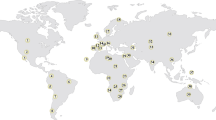Abstract
Blacksmithing remained an omnipresent and essential trade in the west only so long as wrought iron was the basic ferrous commodity of western society. The introduction of the Bessemer process, beginning in the late 1850s, heralded the age of mass-produced steel and modern industrial manufacturing technologies, and with it the irreversible decline and eventual demise of blacksmithing. Many of the skills and secrets of working wrought iron, once acquired and passed on through a long-standing oral tradition shared among blacksmiths has, like its practitioners, also disappeared. This dictionary attempts to provide many of the orally preserved terms, once in use among blacksmiths in North America, as uncovered by the author during a career of study and research on the subject of blacksmithing.
Résumé
La forge n’est demeurée un métier omniprésent et essentiel en Occident qu’aussi longtemps que le fer forgé a été la substance ferreuse de base dans la société occidentale. L’apparition du procédé de Bessemer, vers la fin des années 1850, annonça l’âge de la production en série de l’acier, des technologies de fabrication industrielles modernes, et, par le fait même, le déclin irréversible et l’effondrement éventuel du travail de forge. Plusieurs techniques et secrets du travail du fer forgé-autrefois acquis et transmis grâce à une vieille tradition orale partagée par les forgeronsont, comme ses praticiens, disparu. Ce dictionnaire tente d’apporter autant de termes, utilisés jadis parmi les forgerons en Amérique du Nord, que l’auteur en a découvert tout au long d’une carrière d’étude et de recherche sur la forge.
Similar content being viewed by others
References
Crossley, D. W. 1981 Medieval Iron Smelting. In Medieval Industry, D. W. Crossley, editor, pp. 29–41. CBA Research Report, No. 40, Council for British Archaeology, London, England.
Diderot, Denis, and Jean d’Alembert 1762 Pictorial Encyclopedia of Science Art and Technology. Reprinted in 1969 by Readex Compact Edition, New York, NY.
Forbes, R. J. 1965 Power to 1850. In A History of Technology, Vol. 4, The Industrial Revolution, 1750–1850, Charles Singer, editor. Clarendon Press, Oxford, England.
Gale, W. K. V. 1967 The British Iron and Steel Industry. Newton Abbot, England.
Gale, W. K. V. 1979 Iron and Steel. Museum Booklet No. 20.04, Ironbridge Gorge Museum Trust, Shropshire, England.
Harvey, David 1985 It’s Ironmaking Time. Colonial Williamsburg 8(2):9–11.
Harvey, David 1988 Reconstructing the American Bloomery Process. Historic Trades, Vol. 1, Colonial Williamsburg, The Colonial Williamsburg Foundation, Willimasburg, VA.
International Correspondence Schools 1916 Gauges, Jigs, Dies, Tempering, Heat Treatment, Blacksmithing and Forging. I.C.S. Reference Library, International Textbook Company, Scranton, NY.
Knauth, Percy 1974 The Metalsmiths. Time-Life Books, New York, NY.
Knight, Edward H. 1876 Knight’s American Mechanical Dictionary, 3 Vols. Hurd and Houghton, New York, NY.
Light, John D. 1987 Blacksmithing Technology and Forge Construction. Technology and Culture 28(3):658–665.
Light, John D., and William N. T. Wylie 1986 A Guide to Research in the History of Blacksmithing. Research Bulletin, No. 243, Parks Canada, Ottawa.
Moxon, Joseph 1703 Mechanick Exercises: Or the Doctrine of Handy-Works, 3rd ed. Dan Midwinter and Tho. Leigh, London, England.
Muller, Jens 1980 The Persistent Blacksmiths, Tanzania. In Experiences in Appropriate Technology, Robert J. Mitchell, editor, pp. 11–20. The Canadian Hunger Foundation, Ottawa, Ontario.
Raistrick, Arthur 1972 Industrial Archaeology. Eyre Methuen, London, England.
Roberts, Kenneth (editor) 1976 Tools for the Trades and Crafts: An Eighteenth-Century Pattern Book, R. Timmins & Sons, Birmingham. Ken Roberts Publishing, Fitzwilliam, NH.
Schubert, H. R. 1957 History of the British Iron and Steel Industry from ca. 450 B.C. to A.D. 1775. Routledge & Kegan Paul, London, England.
Semiatin, S. L., and G. D. Lahoti 1981 The Forging of Metals. Scientific American 245(2): 98–106.
Smith, Joseph 1975 Explanation or Key, to the Various Manufactories of Sheffield, reprint of the 1816 edition, John S. Kebabian, editor. The Early American Industries Association, South Burlington, VT.
Steeds, S. 1969 A History of Machine Tools: 1700–1910. Clarendon Press, Oxford, England.
Stewart, John, and Henry Unglik 1999 Metallurgical Investigation of Archaeological Material of Norse Origin from L’anse aux Meadows, Newfoundland. Manuscript, Parks Canada, Ottawa.
Temple, Robert K. G. 1988 Cast Iron and Steel Manufacture. The UNESCO Courier 41(10). UNESCO, New York, NY.
Tylecote, R. F. 1981 Medieval Smith and His Methods. In Medieval Industry, D. W. Crossley, editor, pp. 42–50. CBA Research Report, No. 40, Council for British Archaeology, London, England.
Author information
Authors and Affiliations
Additional information
(deceased)
Rights and permissions
About this article
Cite this article
Light, J.D. A Dictionary of Blacksmithing Terms. Hist Arch 41, 84–157 (2007). https://doi.org/10.1007/BF03377010
Published:
Issue Date:
DOI: https://doi.org/10.1007/BF03377010




